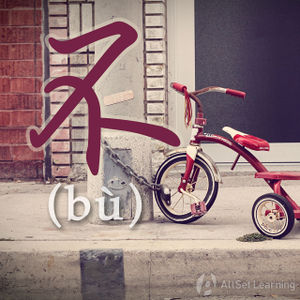Difference between revisions of "Expressing "not only... but also" with "budan... erqie...""
ViktorMugli (talk | contribs) |
|||
| Line 1: | Line 1: | ||
| + | {{Grammar Box}} | ||
| + | |||
"不但⋯⋯,而且⋯⋯" (bùdàn..., érqiě...) is a very commonly used pattern that indicates "not only, ... but also...." | "不但⋯⋯,而且⋯⋯" (bùdàn..., érqiě...) is a very commonly used pattern that indicates "not only, ... but also...." | ||
| Line 35: | Line 37: | ||
[[Category:B1 grammar points]] | [[Category:B1 grammar points]] | ||
| + | {{Similar|"In Addition" as "lingwai"}} | ||
| + | {{Similar|"Not only… but also" with "bujin"}} | ||
| + | {{Similar|Many Types of "Not Only… But Also…"}} | ||
| + | {{Basic Grammar|不但|B1|不但……,而且……|他 <em>不但</em> 聪明,<em>而且</em> 勤劳。|grammar point|ASGTYJ3E}} | ||
| + | {{Rel char|而且}} | ||
Revision as of 08:03, 13 June 2012
-
Level
-
Similar to
- Expressing "and" with "he" (A1)
- Expressing "and also" with "hai" (A2)
- Expressing "both A and B" with "you" (A2)
- Expressing "except" and "in addition" with "chule… yiwai" (B1)
- Expressing "in addition" with "haiyou" (B1)
- Expressing "in addition" with "lingwai" (B1)
- Expressing "in addition" with "zaishuo" (B1)
- Advanced uses of "hai" (B2)
- Expressing "not only..., even..." using "budan..., shenzhi lian" (B2)
- Many types of "not only... but also..." (B2)
- Using "budan... geng" to express "not only... but also" (B2)
- Using "er" to explain contrasting ideas (B2)
-
Used for
-
Keywords
"不但⋯⋯,而且⋯⋯" (bùdàn..., érqiě...) is a very commonly used pattern that indicates "not only, ... but also...."
Structure
Subject + 不但 + Adjective/Verb, 而且 + Adjective/Verb
The pattern can also be used omitting 而且, and instead using adverbs like 也 and 还 in its place.
Examples
- 她 不但 会 说 汉语,而且 会 说 日语。
- 他 不但 能 修 汽车,还 能 修 自行车。
- 啊,他 很 聪明,不但 上 了 很 好 的 大学,而且 有 很 好 的 成绩。



